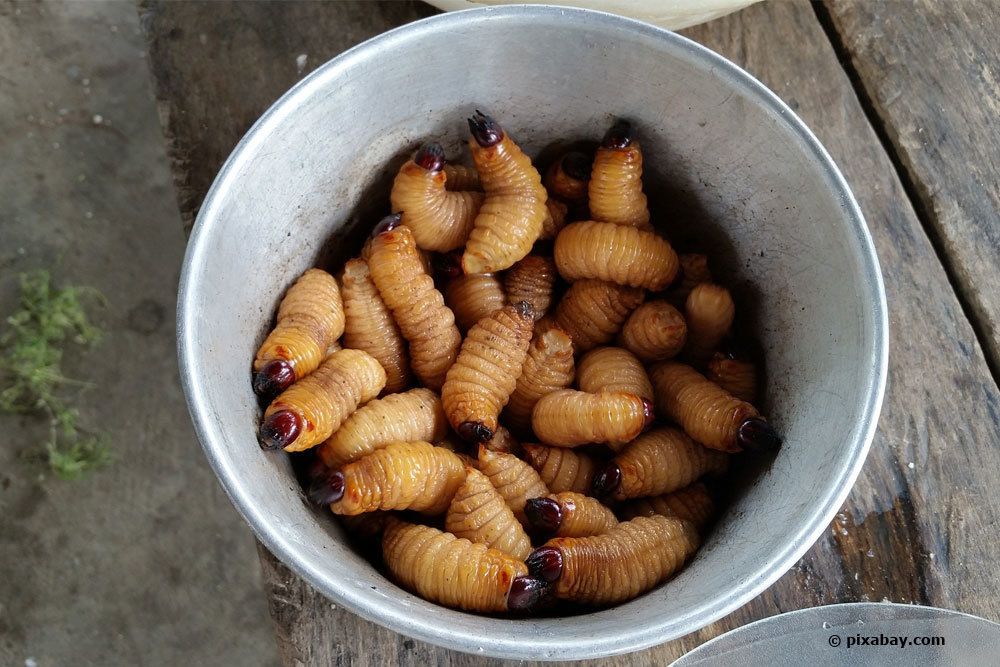Whether you’re a survivalist, an experimental hobby cook, or interested in new, ecologically sound food sources, there are many reasons to eat insects, maggots, and other rather atypical species. Nevertheless, the experience can be rewarding, provided the animals are actually edible. But what about the larvae of leafhopper beetles? Can white grubs be eaten?
Cockchafer grub and nutritional value
Regardless of the motivation for eating them or any possible feelings of disgust or scruples, grubs cannot be dismissed as a food source. Depending on whether you are looking at cockchafer, rose chafer or garden chafer larvae, their nutritional values may vary slightly. Overall, a look at the essential ingredients shows very good suitability as food:
- About 50 to 60 grams of protein
- 30 to 40 grams of fat
- Unsaturated fatty acids
- Vitamins
- Minerals
- Calorific value Approximately 500 calories
- (all data based on 100 grams live weight)
The high nutritional value of the larvae is mainly due to the fact that, on the one hand, the animals themselves naturally eat very high-quality things from a human point of view, namely raw vegetables and other protein-rich insects. In addition, as a developmental stage of the later beetle, the grubs collect energy reserves that they need for pupation and metamorphosis into the finished insect. Humans make direct use of these reserves when eating the larvae.
INFO: It has been proven that almost all primitive peoples have included insects and also maggots, to which the grubs belong, in their diet. The knowledge of the high nutritional value of these animals is therefore not a new discovery, but rather traditional knowledge that has at times been forgotten.
Poisonous or not?
There are indeed individual insects whose developmental stages protect themselves from predators by means of toxins. However, grubs are not among them. What usually prevents humans from eating them is much more socially instilled disgust and revulsion. If these are overcome, the caterpillars are edible without any problems.
The taste
The pure nutritional value does not lead to the fact that humans eat certain food gladly. The taste is certainly also a decisive factor. It is often described in very general terms as nutty and is sometimes associated with smoked foods in the case of fried maggots.

The consistency
Another issue besides taste for many undecided might be rather the consistency of the animals. As insects, they have no load-bearing skeleton whatsoever, while the chitinous shell present in the terminal stage has not yet been formed. Instead, apart from the outer skin, a very reduced locomotor system and a small head, their body consists mainly of the digestive tract and the energy reserves already laid down in the form of fat and protein. Thus, although it is possible to eat ducklings, they do not correspond to the usual eating experience of animal products.
The preparation
One way to change this is to prepare the beetle larvae. Basically, the animals are of course edible raw at any time. A little more “humane”, however, seems to be the preparation in fried form. A few minutes in a very hot pan, or alternatively cooked on a grill grate, the caterpillars die the secondary death without long suffering. The texture afterwards, with a crispy coating, more closely resembles the usual food supply of animal origin, and the ingredients are preserved by the short cooking process.
TIP: Because of the high water content, caterpillars tend to “jump” when heated in a pan. A splash guard or lid helps avoid traumatic experiences from maggots flying low.
Grubs as parasite carriers
Another advantage of cooking grubs is their potential activity as hosts for parasites. Scratchworms from the soil in particular can use the larvae as an intermediate host on the way to the final host, i.e. humans or animals. As an intestinal parasite, the worms adhere to the intestinal wall and make it permeable. Unrecognized and untreated, such an infestation can cause considerable problems in the long term. If, on the other hand, the grub is fully cooked, the eggs or larvae of the worm are also killed and it can be eaten without any problems.

